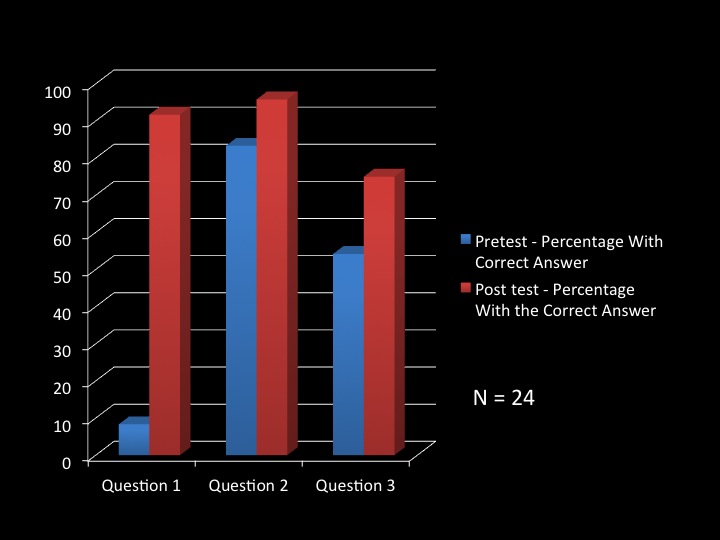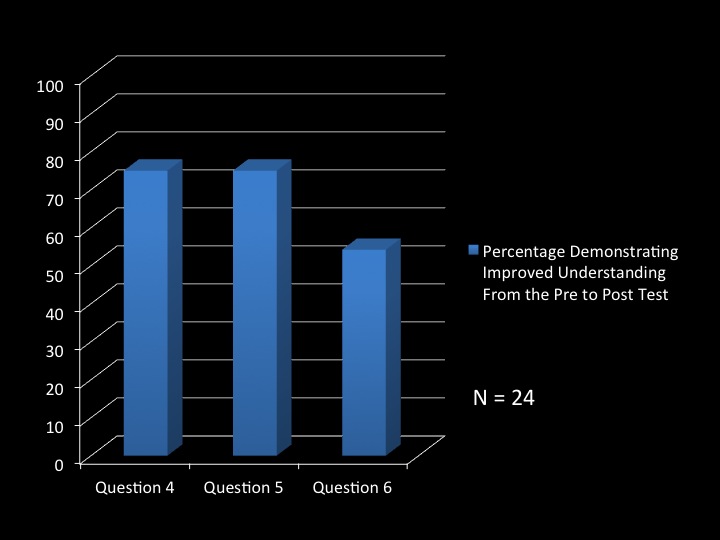Team:BYU Provo/Outreach/Baxtor
From 2013.igem.org
| (7 intermediate revisions not shown) | |||
| Line 29: | Line 29: | ||
==Overview== | ==Overview== | ||
| - | One of our main goals was to create a lasting impact on society's perception of synthetic biology. What better way to influence children and adults than publishing a book? The | + | One of our main goals was to create a lasting impact on society's perception of synthetic biology. What better way to influence children and adults than publishing a book? ''The Adventures of Baxter Bacteria'' teaches young children about the potential of synthetic biology in a fun and creative story. The narrative recounts the wonderful journey of Baxter Bacteria and his pet plasmid, Vector, as they travel through the world facing many challenges. Included at the end of the book is a parental guide designed for parents to not only teach their children about synthetic biology but themselves as well. Terms such as plasmid, bacteria, and virus are all explained making the book a powerful learning tool for all ages. What happens to Baxter and Vector in their big adventure? You will have to read it for yourself to find out! And it rhymes :) |
<br> | <br> | ||
| Line 115: | Line 115: | ||
==Evaluation of the Efficacy of Our Outreach Project As a Learning Tool== | ==Evaluation of the Efficacy of Our Outreach Project As a Learning Tool== | ||
| - | Our intention in writing the book is to improve the public's understanding and appreciation of synthetic biology. To judge the book's virtue in accomplishing this design, we developed a quiz meant to be taken before and after reading | + | Our intention in writing the book is to improve the public's understanding and appreciation of synthetic biology. To judge the book's virtue in accomplishing this design, we developed a quiz meant to be taken before and after reading ''The Adventures of Baxter Bacteria'' and its included parental guide. Dr. Jamie Jensen, an expert in the field of Biology Science Education, advised us in writing questions that would quantitatively demonstrate increased understanding of synthetic biology. We administered the pre- and post- tests to children between 6 and 11. The results to the individual questions (n=24) are depicted below. |
| - | [[File:BYUAnalysis.jpg|750px|center|link=https://static.igem.org/mediawiki/2013/4/49/BYUAnalysis.jpg]] | + | [[File:BYU questions 1-3 corrected.jpg|750px|center|link=https://static.igem.org/mediawiki/2013/4/49/BYUAnalysis.jpg]] |
| + | [[File:BYU questions 4-6.jpg|750px|center|link=https://static.igem.org/mediawiki/2013/4/49/BYUAnalysis.jpg]] | ||
Questions 1-3 were multiple choice and were structured to test basic knowledge of biology. Questions 4-6 tested people's perception of synthetic biology and also their ability to apply principles of synthetic biology to real world situations. We graded questions 4-6 using a rubric with a number system as a measurement of understanding. The data demonstrates that our book is an effective method to increase children's understanding of synthetic biology. All children who participated in our study scored higher on the post test than the pre test. | Questions 1-3 were multiple choice and were structured to test basic knowledge of biology. Questions 4-6 tested people's perception of synthetic biology and also their ability to apply principles of synthetic biology to real world situations. We graded questions 4-6 using a rubric with a number system as a measurement of understanding. The data demonstrates that our book is an effective method to increase children's understanding of synthetic biology. All children who participated in our study scored higher on the post test than the pre test. | ||
| Line 123: | Line 124: | ||
'''We gained permission from the IRB before conducting the tests used to gather this data.''' | '''We gained permission from the IRB before conducting the tests used to gather this data.''' | ||
| - | The following are | + | The following are links to the quiz we administered and the rubric we used for grading free response answers. |
| - | [ | + | * [https://static.igem.org/mediawiki/2013/9/98/BYUQuiz.pdf Quiz.pdf] |
| + | |||
| + | * [https://static.igem.org/mediawiki/2013/c/cb/BYUquizrubric.pdf Rubric for Free Response Answers.pdf] | ||
| - | |||
</font> | </font> | ||
Latest revision as of 03:54, 28 September 2013
| ||
|
|
OverviewOne of our main goals was to create a lasting impact on society's perception of synthetic biology. What better way to influence children and adults than publishing a book? The Adventures of Baxter Bacteria teaches young children about the potential of synthetic biology in a fun and creative story. The narrative recounts the wonderful journey of Baxter Bacteria and his pet plasmid, Vector, as they travel through the world facing many challenges. Included at the end of the book is a parental guide designed for parents to not only teach their children about synthetic biology but themselves as well. Terms such as plasmid, bacteria, and virus are all explained making the book a powerful learning tool for all ages. What happens to Baxter and Vector in their big adventure? You will have to read it for yourself to find out! And it rhymes :)
Different EditionsThe first edition of The Adventure of Baxter Bacteria was shared with kids during our library visit. Click here to find out more. The following is the final/published edition of The Adventure of Baxter Bacteria, with minor modifications to make visualization suitable for the wiki. It contains a parental guide and a subsequent quiz toward the end of the book for parents to share with their children. Please click on Next Page or Previous Page to flip through the book.

----------------------Previous Page---------------------- ----------------------Next Page---------------------- © BYU 2013 Posted with permission from BYU.
Evaluation of the Efficacy of Our Outreach Project As a Learning ToolOur intention in writing the book is to improve the public's understanding and appreciation of synthetic biology. To judge the book's virtue in accomplishing this design, we developed a quiz meant to be taken before and after reading The Adventures of Baxter Bacteria and its included parental guide. Dr. Jamie Jensen, an expert in the field of Biology Science Education, advised us in writing questions that would quantitatively demonstrate increased understanding of synthetic biology. We administered the pre- and post- tests to children between 6 and 11. The results to the individual questions (n=24) are depicted below. Questions 1-3 were multiple choice and were structured to test basic knowledge of biology. Questions 4-6 tested people's perception of synthetic biology and also their ability to apply principles of synthetic biology to real world situations. We graded questions 4-6 using a rubric with a number system as a measurement of understanding. The data demonstrates that our book is an effective method to increase children's understanding of synthetic biology. All children who participated in our study scored higher on the post test than the pre test. We gained permission from the IRB before conducting the tests used to gather this data. The following are links to the quiz we administered and the rubric we used for grading free response answers.
| |
 "
"

